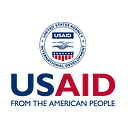LHSS Identifies Best Practices for Building Out Ukraine’s Telemedicine System
Promising models from other countries point the way
By Benjamin Dunbar and Vitaliy Karanda
Having proven invaluable in helping Ukrainians access health care throughout the Russian invasion, telemedicine is poised to play an integral role in health care delivery in Ukraine after the war ends. Indeed, the Ukrainian government had already begun working with the USAID Local Health System Sustainability Project (LHSS) to enhance the country’s telemedicine system before the war began.
Before the war, a key challenge was the lack of a common vision among stakeholders for telemedicine development and implementation. To address this, LHSS convened an Interagency Working Group to produce a unified strategy and implementation plan.
To ensure the working group’s decisions were based in evidence and the latest information, LHSS produced a landscape assessment describing the status of telemedicine in Ukraine (Telemedicine Landscape Assessment) and reviewed international best practices surrounding telemedicine (International Review of Best Practices). In combination, these studies showed where action is needed to steer telemedicine development in Ukraine towards best practices and greater efficacy. From this, LHSS was able to develop targeted recommendations for the Government of Ukraine.
Identifying challenges, finding solutions
The landscape assessment revealed that one persistent obstacle to telemedicine development in Ukraine was that doctors, nurses, and hospital administrators were unsure of who was responsible for what aspects of telemedicine. For example, when surveyed, health care providers were unsure which government institutions were responsible for maintaining equipment, storing data, issuing regulations, or even funding telemedicine services.
The best practices review offered some useful lessons. In the UK, the National Health Service developed a comprehensive telemedicine strategy detailing the agencies involved in telemedicine and their responsibilities. The NHS also ran communication campaigns to inform providers of changes to the telemedicine system.
LHSS work in Ukraine mirrors the UK’s promising model. With LHSS support, the Interagency Working Group on telemedicine has produced a strategy and implementation plan to guide telemedicine development. Additionally, LHSS has recommended campaigns to inform Ukrainian health care providers of changes to the telemedicine system.
The landscape assessment also examined human resources issues. It found that Ukrainian medical workers reported that they had not received training on provision of telemedicine services. As a result, many said they lacked the skills to provide services via telemedicine.
Again, the International Review of Best Practices offered promising models. In the United States, a consortium of telehealth resource centers provides free education to practicing health care providers. Likewise, Lithuania and Croatia are both working to integrate telemedicine in their medical training curriculums.
To build up telemedicine skills, LHSS has created training videos, hosted training sessions, and provided 24/7 support to Ukrainian health care providers on effectively using donated telemedicine technologies. As of March 2023, more than 1,000 medical workers in nearly 300 health facilities had participated in the training. LHSS now recommends expanding trainings beyond LHSS-supported facilities to all practicing health care workers and incorporating telemedicine into the standard medical education curriculum.
Interoperability is key
A third important barrier revealed in the landscape assessment was the lack of interoperability of telemedicine equipment with medical information systems (MISs) and the central eHealth database. Because the devices cannot communicate with various MISs and the eHealth database, the results of telemedicine services available in one health care facility are not accessible for further examination by medical specialists at another facility. Lack of compatibility has also led to hospitals being unable to communicate with one another when a patient is transferred.
In the best practices review, Sweden and Lithuania stood out for their attention to interoperability. Both countries have established a single eHealth platform with an associated patient portal, guaranteeing compatibility across infrastructure. Likewise, the UK uses a universal patient app, while Spain has a personal health card that facilitates access to patient data.
LHSS is helping design the infrastructure to enable the integration of telemedicine services with Ukraine’s existing centralized eHealth information system. LHSS recommends that the Ukrainian government continue to consider interoperability and compatibility as it builds out its telemedicine infrastructure both during the war and in the reconstruction period to follow.
About the authors:
Benjamin Dunbar is a project management analyst on the LHSS Project.
Vitaliy Karanda is chief of party for the LHSS Project in Ukraine.
